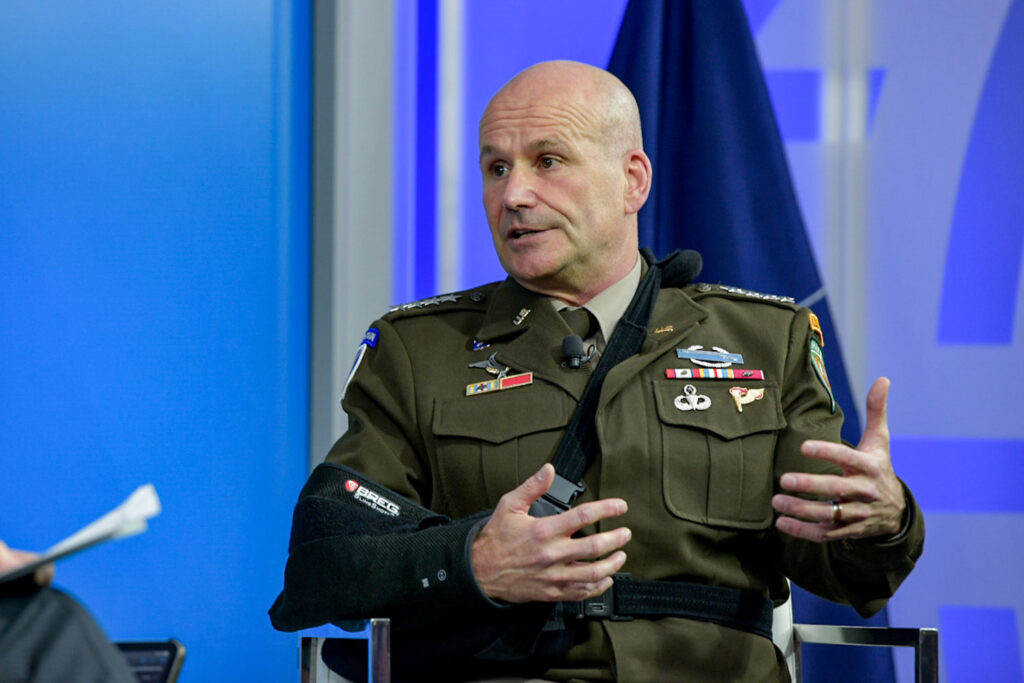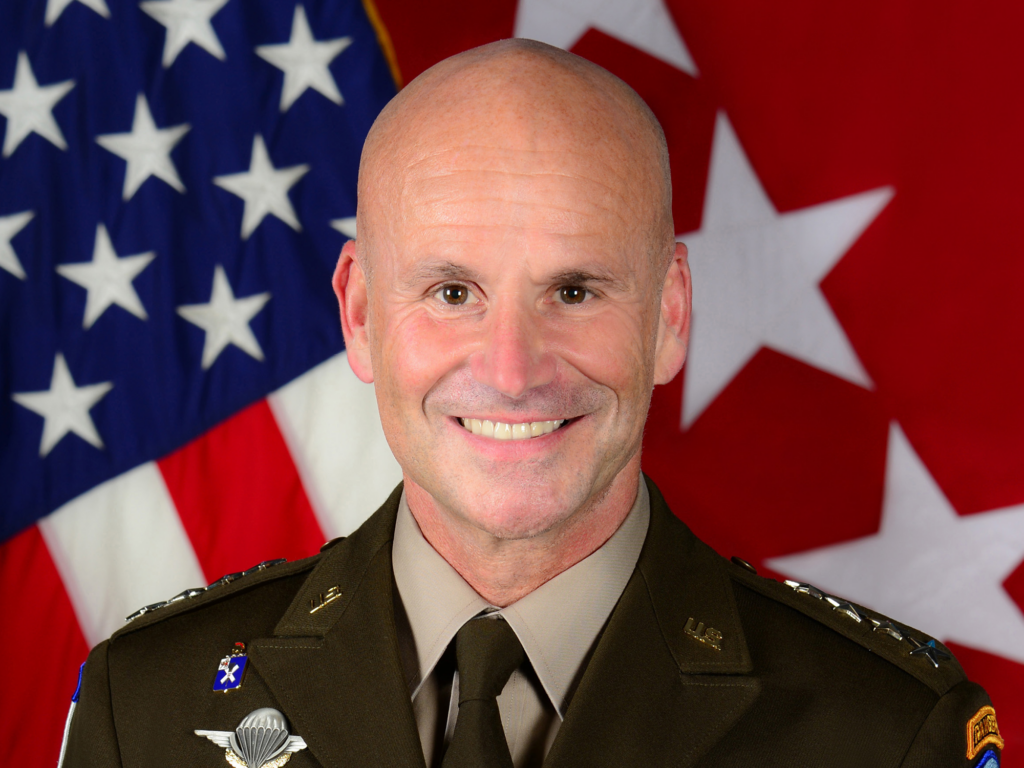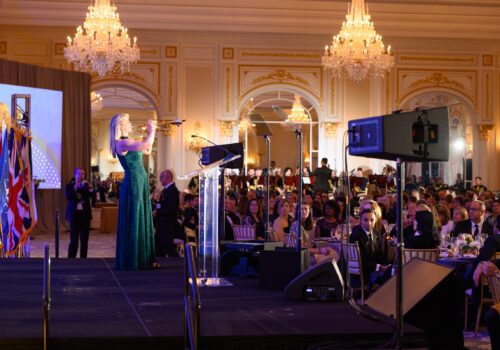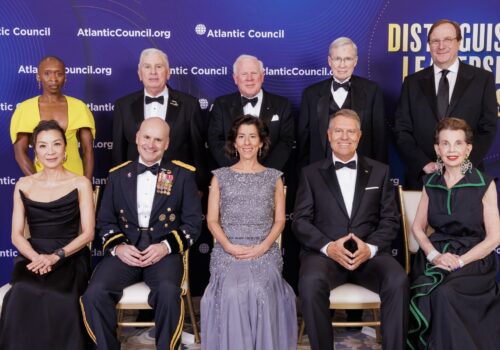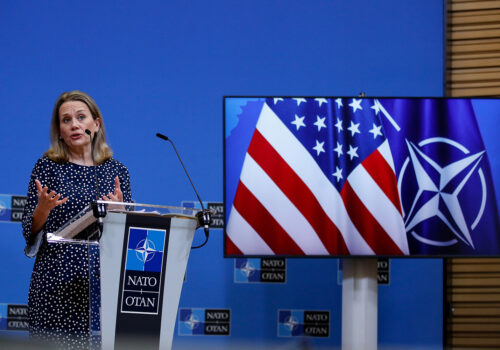Watch the full event
Right now, NATO’s Steadfast Defender 2024 military exercise is taking place across Europe and at sea.
The effort, the largest the Alliance has undertaken since the Cold War, is not just a demonstration of the transatlantic bond; it is also NATO’s opportunity to “rigorously test” its defense and deterrence strategy, said General Christopher Cavoli, supreme allied commander Europe (SACEUR) and commander of US European Command.
Cavoli spoke at a May 7 Atlantic Council Front Page event, which was part of the Forward Defense program’s Commanders Series (in partnership with Saab) and of the Transatlantic Security Initiative’s programming organized in advance of the NATO Summit in Washington.
The general went on to say that NATO’s 2020 defense and deterrence strategy is part of an effort to conduct a “wholesale modernization” of NATO’s collective defense to respond to today’s security challenges.
“We had previously been optimized for a very different task,” he said. Cavoli explained that after the Cold War, NATO pivoted toward conducting crisis-management missions well beyond its borders that allowed the Alliance to participate in missions on its “own terms” and on a predictable schedule.
But “all that has changed,” Cavoli said, pointing to Russia’s war in Ukraine. “It is happening all the time, 24/7, [with] no respite for more than two years.”
The war has shown that today, “you either win up front, fast, and big, or you’re in a long fight. So . . . win up front but be ready to win long,” he said.
Below are more highlights from the event, where Cavoli touched upon NATO’s plans to modernize its defenses and the intensifying threats to the Alliance.
Defending in a new era
- At last year’s NATO Summit in Vilnius, allies adopted regional defense plans, which spark three changes, as Cavoli explained: First, they bring a revamped expectation for NATO’s force structure, which outlines not only the forces required but also the spending needed to resource and maintain it. “You will find that 2 percent [of a country’s gross domestic product spent on the military] is certainly not a ceiling, but a floor,” he said, adding that the plans provide a “blueprint for burden sharing.”
- Second, the new regional defense plans delegate authority for operational decision making. Cavoli said that when the Alliance was primarily focused on out-of-area operations, military authorities were limited to higher, political levels. “SACEUR requires basic military authorities,” Cavoli said. “These are working their way through the new, modernized alert system.”
- Third, the new plans also change systems of command and control, Cavoli said. Before, NATO focused on cyclical deployments to regions and terrains that were unfamiliar to parts of the command chain. Now, regional plans are assigning specific geographic areas to each of the Alliance’s headquarters so that each one will know “exactly what terrain it’s required to defend” and the tactical units it has to defend with.
- The modernization effort will also require a ramp-up in the defense industry. “I don’t think anybody is satisfied with current levels of production,” Cavoli said. Going forward, he added, the government and industry will need to work together to increase cooperation between Allies and industry partners. “I believe we’ll get there,” he said.
- “This modernization of NATO’s collective defense will not be realized immediately,” Cavoli said. “It will require relentless focus and determination from across NATO and in all member nations . . . It will be difficult, but we are well on our way.”
The threats ahead
- While Beijing is far from Brussels, NATO “does have China challenges inside it right now,” Cavoli said, related to strategic infrastructure, intellectual property, and private data.
- “Russia will pose a long-term threat to the Alliance,” said Cavoli, adding that the West will have a “big Russia problem for years to come,” as Moscow works to expand the size of its military and reconstitute losses.
- “The Russian army in Ukraine is bigger now than it was at the beginning of the fight,” he pointed out. “Many of the troops are not as high quality . . . a lot of the equipment fielded is older: It’s refurbished, but it’s based on an older model.”
- Cavoli said the question at the top of Western leaders’ minds shouldn’t be about how fast Russia can reconstitute: It should be how fast can Russia rebuild its forces compared to the West. Maintaining an advantage in speed, he explained, is a matter of maintaining “political will” and developing the “elasticity” of the defense industrial base.
- Many countries facing Russian influence “are looking westward right now” in search of new security partners, Cavoli said. While the Alliance was created to defend its members, “we don’t exist in a vacuum,” he said. “We need friends and partners.”
Katherine Walla is an associate director on the editorial team at the Atlantic Council.
Watch the event
Further reading
Wed, May 8, 2024
The 2024 Distinguished Leadership Awards: Celebrating leaders with insight, experience, and resolve
New Atlanticist By Katherine Walla
On May 8, the Atlantic Council honored Romanian President Klaus Werner Iohannis, US Secretary of Commerce Gina Raimondo, General Christopher G. Cavoli, and actress and producer Michelle Yeoh for their leadership.
Wed, May 8, 2024
Full transcript: The 2024 Distinguished Leadership Awards recognize skillful leaders navigating a world of crises
Transcript By
The Atlantic Council honored government, military, and artistic leaders who are bolstering security and advocating for the most vulnerable globally.
Mon, Apr 29, 2024
Expect a new ‘bridge’ to NATO membership for Ukraine at the Washington summit, says Julianne Smith
New Atlanticist By Katherine Walla
Smith spoke at an Atlantic Council curtain-raiser event ahead of the NATO Summit, where she said to expect a measure to "institutionalize" bilateral support to Ukraine.
Image: General Christopher Cavoli speaks at the Atlantic Council on May 7, 2024.
